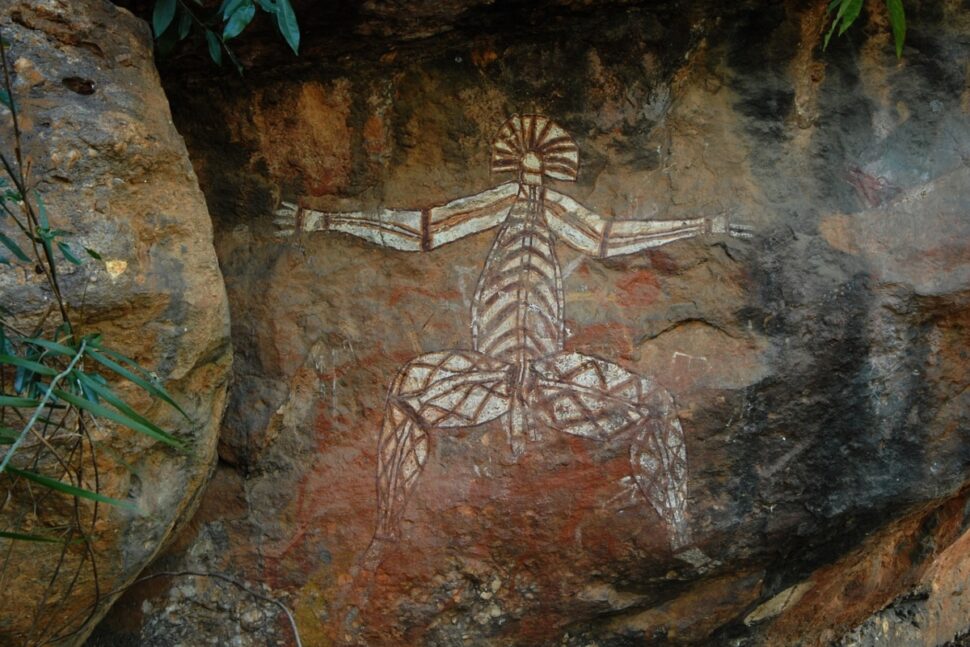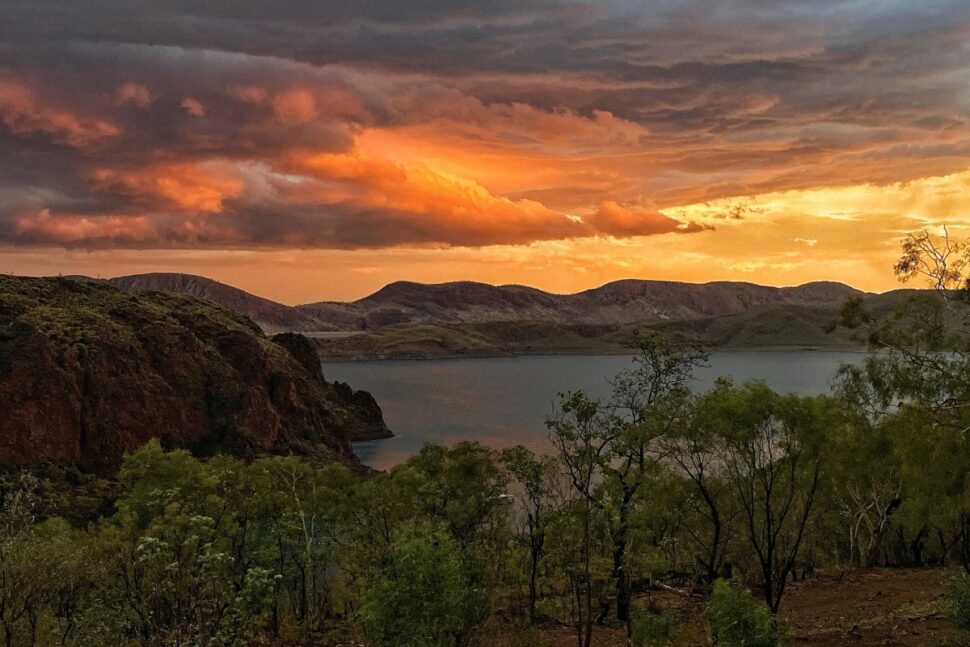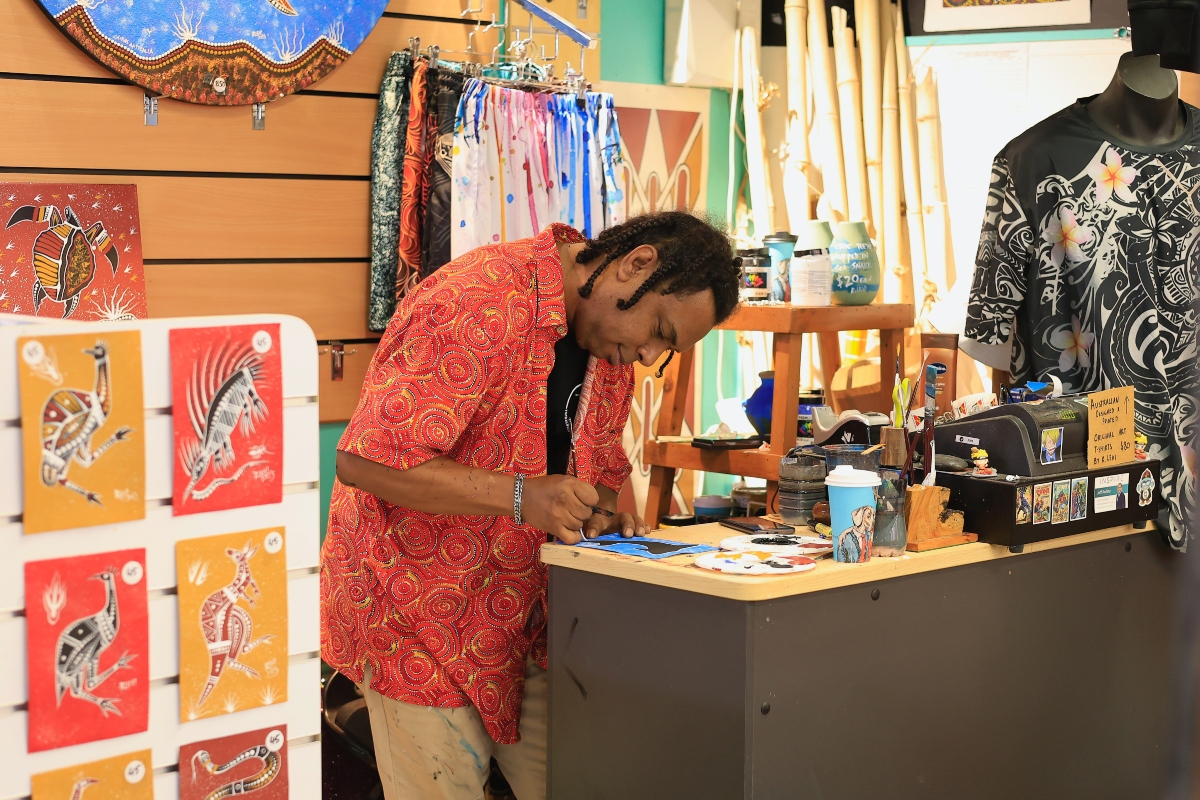Before the Great Barrier Reef and the Sydney Opera House came to be, Australia was home to a vibrant Aboriginal culture. One of the best ways to experience the country’s rich heritage is to visit the places where the indigenous people have lived for thousands of years.
Moreover, it’s worth noting that Aboriginal culture is not a monolith but a mosaic of over 300 languages and other groupings, each with its traditions, beliefs, and art forms. So, whether you want to learn about the Dreamtime, admire the rock art, or witness a ceremony, there are plenty of places to visit to connect with Australia’s Aboriginal culture.
Uluru-Kata Tjuta National Park
No traveler interested in Aboriginal culture should miss the opportunity to visit Uluru-Kata Tjuta National Park, one of the most sacred places in Australia. Uluru, also known as Ayers Rock, is a massive sandstone monolith that rises from the desert, and Kata Tjuta, also known as the Olgas, is a group of 36 domed rock formations. Both are considered living cultural landscapes by the Anangu people, the land’s traditional owners.
You can explore the park on foot, by bike, or by camel and learn about the stories and legends associated with the rocks, the plants, and the animals. You can also join a guided tour led by Anangu guides, who will share their knowledge and perspective on the park. At night, you can marvel at the Field of Light, a stunning installation of thousands of solar-powered lights illuminating the desert.
Kakadu National Park
Kakadu National Park is Australia’s largest national park and a World Heritage Site for its natural and cultural values. It is home to the Bininj/Mungguy people, who have lived there for over 65,000 years. The park boasts a diverse and spectacular landscape, with wetlands, waterfalls, escarpments, forests, and a rich biodiversity of plants and animals.

One of the main attractions of Kakadu is its rock art, which is among the oldest and most extensive in the world. You can see more than 5,000 sites of rock art depicting scenes of hunting, ceremonies, and mythology, as well as historical events such as the arrival of Europeans and buffaloes. Furthermore, you can join a cultural tour or a cruise to meet the local Aboriginal people.
Arnhem, Land Of Aboriginal Culture
A large and isolated area northeast of the Northern Territory, Arnhem Land is home to some of the few remaining indigenous communities and their distinctive cultural practices. Here, the Yolngu people have lived for millennia while preserving their culture, language, customs, and ceremonies. Furthermore, many modern artists and musicians can trace their inspiration to the music and art of Arnhem Land.
To visit Arnhem Land, you need a permit from the Northern Land Council, as it is a restricted area. You can also join a guided tour to access some of the region’s most pristine and beautiful places, such as the Cobourg Peninsula, the East Alligator River, and the Gove Peninsula. Also, there will be chances to meet local people and gain insight into Aboriginal culture, spirituality, and history.
The Kimberley
Located northwest of Western Australia, the expansive and rocky Kimberley is home to some of the planet’s oldest and most varied ecosystems. Numerous indigenous communities, including the Bunuba, the Gija, the Worrorra, and the Wunambal, call this area home. The Kimberley is a breathtaking destination with abundant fauna and natural features like gorges, waterfalls, caverns, and islands.

One of the best ways to experience the Kimberley is to follow the Gibb River Road, a 660-kilometer dirt track that crosses the region’s heart. Along the way, you can visit some of the most unique and sacred places, such as the Bungle Bungle Range, the Mitchell Falls, the Windjana Gorge, and the Horizontal Falls.
